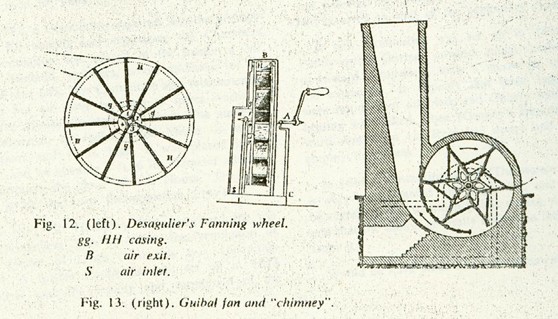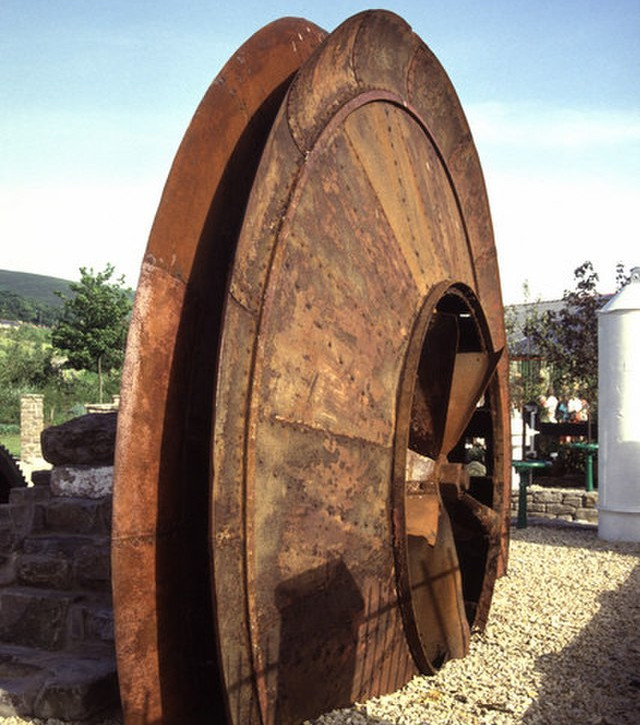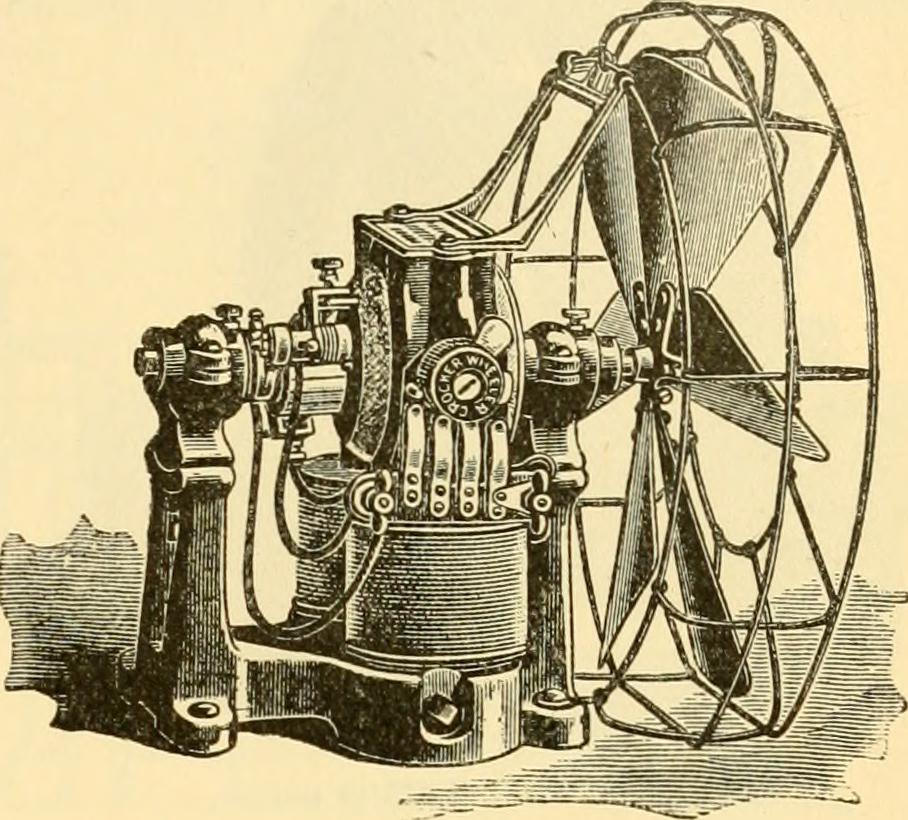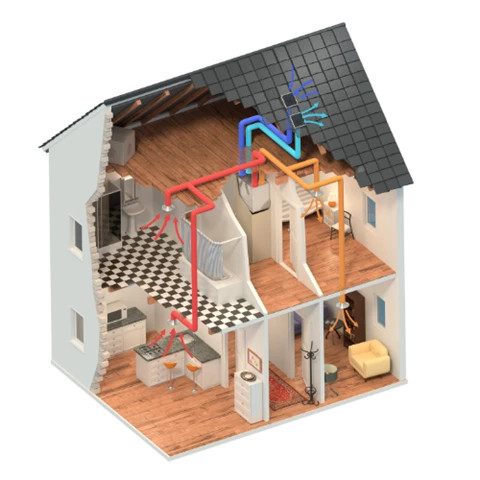Fastlec uses cookies to ensure that we give you the best experience on our website. If you continue we assume that you consent to receive all cookies on the Fastlec website. Read More.
Blog
All of the latest news and insights into the electrical world, from Fastlec.
Hello, history buffs and fresh-air aficionados! Today, we're diving into the fascinating evolution of ventilation, from the breezy corridors of ancient civilizations to the high-tech systems keeping our modern spaces crisp and comfortable. So, grab a comfortable spot (preferably well-ventilated), and let's embark on this airy journey together.
Ancient Beginnings: When Nature Was the Architect
Our story begins in the ancient worlds of Egypt, Rome, and Persia, where the concept of ventilation wasn't a luxury—it was a necessity. The ingenious Egyptians, who, while constructing the pyramids, created ventilation shafts to circulate air inside these monumental tombs. These early airways ensured that even in the afterlife, the pharaohs could enjoy a breath of fresh air.
Meanwhile, the Romans, not to be outdone by their desert-dwelling contemporaries, introduced the world to the "hypocaust" system. This early form of central heating in wealthy Roman homes pushed hot air through spaces under the floors and within the walls, providing ventilation and a touch of warmth during those chilly Mediterranean winters.
And let's not forget about the wind catchers of ancient Persian architecture. These cleverly designed structures captured the cool breezes atop buildings and funnelled them into the living spaces below, providing respite from the scorching heat. It's fascinating to see how these early innovations harnessed natural forces to create comfortable living environments.
Shesh Badgir Windcatchers. Photo by Kaveh Parseh, CC BY-SA 4.0, via Wikimedia Commons.
Medieval to Renaissance: The Quest for Fresher Air
In the Medieval and Renaissance periods, architecture took a grand turn towards not just form and function, but also the incorporation of ventilation principles that provided comfort and a semblance of health safety. Buildings with large windows, such as those seen in Gothic cathedrals, allowed light to penetrate deep into interiors, reducing the reliance on combustion-based light sources and improving air quality.
However, it was during the Renaissance that we see a more scientific approach to ventilation. Architects like Leon Battista Alberti and engineers like Leonardo da Vinci began to consider the flow of air in their designs more deliberately. Da Vinci, with his insatiable curiosity, experimented with ways to manipulate air flow in buildings, though much of his work in this area remained theoretical.
One significant Renaissance advancement was the development of chimneys. While not a new invention, their widespread adoption during this period for smoke and fume extraction from buildings was a critical step forward in managing indoor air quality. This era laid the groundwork for understanding the importance of removing contaminated air, a principle that remains at the heart of modern ventilation systems.
At the end of the Renaissance emerged inventions that would lay the foundations for the shift towards mechanical ventilation. For example, looking at the hand operated fanning wheel by Dr. John Theophilus Desaguliers you can see the bones of what would become our modern ventilation solutions.
Unknown Author. John Desaguliers Paddle Wheel Fan, 1734, via SlidePlayer
Industrial Revolution: Mechanical Might
The Industrial Revolution was a crucible of innovation, reshaping societies and industries with its fiery forge of progress. Among the many transformations it heralded, the evolution of ventilation systems stands out as a pivotal shift, addressing the needs of burgeoning industries and urban centres.
In the mining sector, the introduction of steam-powered fans, marked a significant advancement, mitigating the dangers of explosive gases and enhancing miners' health by ensuring a constant flow of fresh air underground.
Steam Powered Waddle Fan. Photo by Chris Allen, CC BY-SA 2.0, via Wikimedia Commons. Modifications made.
Factory architecture during this period also began to prioritize ventilation. The design of buildings with high ceilings and expansive windows aimed to facilitate natural air circulation. However, the growth and scale of factories soon outpaced the capabilities of natural ventilation, leading to the development of mechanical ventilation systems. These systems, often powered by belt-driven fans connected to steam engines, represented a significant leap forward in controlling indoor air environments on a large scale.
The Industrial Revolution also witnessed the birth of systems that merged heating and ventilation. This innovation acknowledged the dual need for temperature control and fresh air, utilizing excess heat from manufacturing processes to warm incoming fresh air during colder months, thereby optimizing energy use.
Moreover, the era highlighted the crucial link between ventilation and public health, especially in rapidly urbanizing areas plagued by poor air quality and overcrowding. This awareness led to the first public health policies addressing ventilation, underlining its importance in preventing disease in both urban and industrial settings.
As the Industrial Revolution progressed, the groundwork was laid for the future of ventilation technology. The era's inventive spirit in addressing the air quality challenges of industrialization has left a lasting legacy, paving the way for the sophisticated ventilation systems we rely on today, which continue to evolve in response to our ever-changing environmental and health needs.
19th Century and Beyond: The Technological Tide
The advent of electricity brought about the next leap in ventilation technology. In the sweltering heat of 1882, American inventor Schuyler Skaats Wheeler changed the way people experienced comfort indoors. He is credited with creating the first electric fan, a bladed marvel powered by a DC motor, which he affectionately called the "buzz fan". This ground breaking invention laid the foundation for the widespread use of electric fans in homes and workplaces, offering a much-needed escape from stifling summer temperatures.
Unknown author. Crocker-Wheeler electric fan, via Flickr - Internet archive image
But the real game-changer was the invention of air conditioning by Willis Carrier in 1902. This technology not only controlled ventilation but also temperature and humidity, making indoor environments truly comfortable for the first time in human history.
In the latter half of the 20th century, the focus shifted towards energy efficiency and air quality. Innovations such as Heat Recovery Ventilators (HRVs) and Energy Recovery Ventilators (ERVs) became important in climates where heating or cooling costs are significant. These systems work by exchanging the energy from outgoing stale air to pre-condition the incoming fresh air, significantly reducing energy consumption.
Today, smart HVAC systems integrate seamlessly with home automation systems, allowing for unprecedented control over indoor climates. These systems can adjust ventilation based on real-time air quality readings, occupancy, and even weather forecasts, optimizing both comfort and energy use.
MVHR units, or Mechanical Ventilation with Heat Recovery, represent the most modern approach to ventilation extraction. These systems continuously remove stale air and introduce fresh, filtered air into a building. Unlike traditional extraction methods, MVHR units recover heat from the extracted air, utilizing it to pre-warm the incoming fresh air. This significantly reduces energy consumption associated with space heating, contributing to the overall sustainability of modern homes.
Unknown Author. MVHR House Diagram, via Nuaire – MVHR Explained.
The emphasis on sustainable building practices has led to the resurgence of natural ventilation strategies, albeit in a more controlled and sophisticated manner. Modern architecture often incorporates elements designed to enhance natural airflow, such as strategically placed windows, atriums, and ventilation shafts, demonstrating that the principles of natural ventilation discovered by our ancestors remain relevant.
Step Into the Future of Fresh Air with Us
As we've journeyed through the corridors of time, witnessing the evolution of ventilation from ancient breezes to modern marvels, it's clear that the quest for the perfect indoor climate has always been a part of human ingenuity. Today, we stand on the precipice of the most advanced, sustainable, and smart ventilation solutions ever seen.
At Fastlec, we're not just observers of history; we're actively pert of creating the next chapter. Our range of cutting-edge ventilation solutions embodies the lessons learned from the past, powered by the technology of the future. From energy-efficient HVAC systems that whisper quietly in the background to smart ventilation controls that respond intuitively to your indoor environment, we offer a breath of fresh air in the truest sense.
We invite you to explore our innovative products and services, designed with both your comfort and the planet's well-being in mind. Discover how we're integrating smart technology, sustainability, and historical wisdom to create ventilation solutions that not only serve your needs but also contribute to a healthier world.
Visit us at www.fastlec.co.uk to learn more about our offerings and how we can help you breathe easier, today and tomorrow. Welcome to the future of indoor air quality—where every breath you take is a testament to centuries of innovation, brought to your doorstep by Fastlec.
Sources








